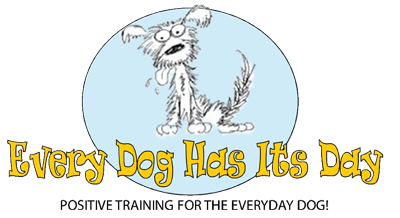How do I stop my puppy from biting me?!!?
Dogs use their mouths to explore the world. It is very common and natural for young dogs
to chew everything in sight, often including your hands and feet. If your dog is mouthy like this, it does not mean he is destructive or aggressive. He is simply a normal dog who needs learn what is ok to put in his mouth and what isn’t.
Make sure your dog has a variety of chew toys. We highly recommend Kong toys, because
these toys are tough enough to take aggressive chewing without breaking off into pieces
your dog can swallow. Kong toys can be stuffed with small treats and plugged up with
peanut butter. Kong toys can also be frozen for a long-lasting treat. Your dog needs toys
with different textures. If he can tear the toy, only let him have that toy when you are
supervising him. There could be small pieces that he can choke on or swallow.
W hat do I do when my dog chews on inappropriate items, such as furniture?
hat do I do when my dog chews on inappropriate items, such as furniture?
When your dog starts to chew on an inappropriate object, redirect him to a chew toy and
praise him for taking it. Keep a chew toy near you for instant redirection. If he continues to go back to the inappropriate object to chew, like a table leg, you can spray Bitter Apple,
Bitter end, or a similar chew hindering product on the object. Spray the object periodically
until he becomes convinced that it does not taste very good. You can also remove the item he is chewing on, like houseplants or your shoes, for example. You can also block off that
area of the house from the dog, or tether him to your body with his leash to keep him in
sight at all times. Placing him in his crate when you are unable to supervise him is also an
option. During the teething stage, puppies tend to chew more, and in adolescence, the
chewing can intensify. Most dogs start to slack off on chewing as they reach maturity.
My dog likes to nip at me. How do I stop this?
When dogs nip at your hands and feet in play, they do not know that they are hurting you.
This is how your dog played with his litter mates as a puppy, and how he plays with other 
dogs in general. He thinks this is how he should play with you. Even if your dog is growling
and snarling, he is most likely playing with you and not trying to be aggressive. Many dogs
make lots of vocal noises when playing. You must teach your dog how to correctly play with you and develop bite inhibition.
If you tend to tell him “no, stop, don’t,” and push at him with your hands when he nips, you are playing back (from his perspective) and encouraging him to nip. Offer him a toy and put it in his mouth instead, and give him attention if he takes it.
For many dogs, a loud yelp (OW!) will make them stop nipping- momentarily. However,
because using their mouths is so instinctive and natural for them, most dogs will go back to nipping. If your dog responds well to a yelp, he will eventually learn to control his impulses better and inhibit his nipping. Unfortunately, some dogs hear the yelp and think, “wheee, I made you make a squeaky toy sound!” and start nipping more. If your dog gets a gleam in his eye instead of hesitating at your yelp, don’t use this method. Instead, stop the play session immediately and walk away from him. If he follows you and continues to nip, you can walk into a room and close the door, with him on the other side. Wait 20-30 seconds,
and try to interact with him again. If he continues to nip, go away again. He will eventually
understand that when he nips, he loses his mom/dad and play time is over.
Sometimes dogs are too persistent for you to stand there and ignore them while they are
playing piranha with your flesh and clothing. In these cases, you may want to try a short
20time-out. For a time-out to work, you need to catch the dog immediately in the act, and
have him in a time-out area within seconds. A good time out area is in his crate. Quietly
take him to his crate, and shut him in his crate for 3-5 minutes.

If he is quiet, he may come out and try playtime again without nipping. When using the crate as a time out place, he will not associate his crate as a horrible place. If you send a child to their room, they will continue to go back to their room even after the time out is over. It is a safe, comfortable haven for them. Dogs feel the same way about their crates. It is essentially a place for them to physically calm down when they become too aroused during play.
Have patience, make sure everybody who interacts with the dog is consistent, and do not
encourage him to nip by playing roughly with him with your hands.

